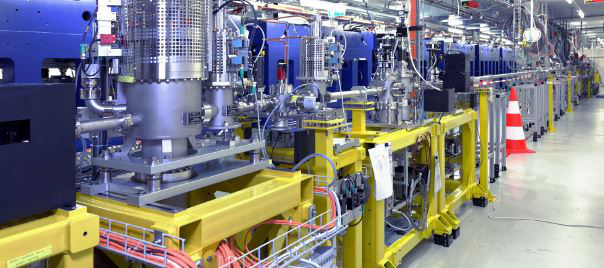Speaker
Description
The large-scale nature of free-electron lasers (FELs) often precludes control over various noise sources affecting the arrival time of the X-ray pulses. To achieve high temporal resolution (<100 fs) in laser pump/X-ray probe experiments, an arrival time monitor (ATM), such as an X-ray/optical cross-correlator, is implemented. Typically, an X-ray-induced change of the optical properties of a target is used to derive the arrival time of the X-rays relative to the optical pump laser. These ATMs often require soft X-ray fluence levels of >1 mJ/cm$^2$. The next generation of high-repetition FELs, such as the European XFEL and the Linac Coherent Light Source II (LCLS-II), take advantage of superconducting accelerators to enable repetition rates of up to 1 MHz. As a result of the increase in repetition rate, the energy per X-ray pulse will decrease. The X-ray fluences required by current ATMs cannot be achieved with high repetition rate FELs or when using few and sub-fs X-ray pulses. The novel ATM scheme described here solves this problem by achieving unprecedented sensitivity to soft X-rays.
Current ATM designs at FELs use a portion of the pump laser beam at a wavelength of 800 nm or white light in the visible range to probe an X-ray induced material change. However, state-of-the-art optical timing distribution systems operate at a wavelength of 1550 nm and are an enabling technology for sub-10-fs timing jitter between X-rays and pump lasers. Therefore, the ATM presented here cross-correlates X-rays and 1550 nm optical pulses to pave the way to directly derive the X-ray timing jitter measured with respect to an optical master oscillator.
The X-ray/optical cross-correlator is based on a time-to-space mapping geometry and takes advantage of 1) a specially designed multi-layer target, and 2) an interferometric detection scheme. The sample used here is made of a thin film of germanium, sputtered on a 2 μm thick diamond layer grown by Chemical Vapor Deposition (CVD) onto a silicon dioxide layer on top of a silicon substrate. This multi-layer structure shows optical interference effects (etalon) in reflectivity, which are designed to exhibit a node in the reflection spectrum around 1550 nm. The X-ray induced changes to the sample shift the center wavelength of this node leading to dramatic amplitude and phase changes of the reflected 1550 nm light, allowing to detect extremely weak X-rays when combined with an interferometric detection scheme.
The X-ray/optical cross-correlator described here has been tested during an experiment on the LCLS soft X-ray beamline at an X-ray photon energy of 530 eV and a pulse repetition rate of 120 Hz. We achieved a ~100-fold increase in the relative signal change as compared to previously demonstrated techniques. The resolution of the timing measurement is estimated to 2.8 fs (rms), making this cross-correlator well suited for sub-10-fs timing jitter operations at LCLS and other FELs.

